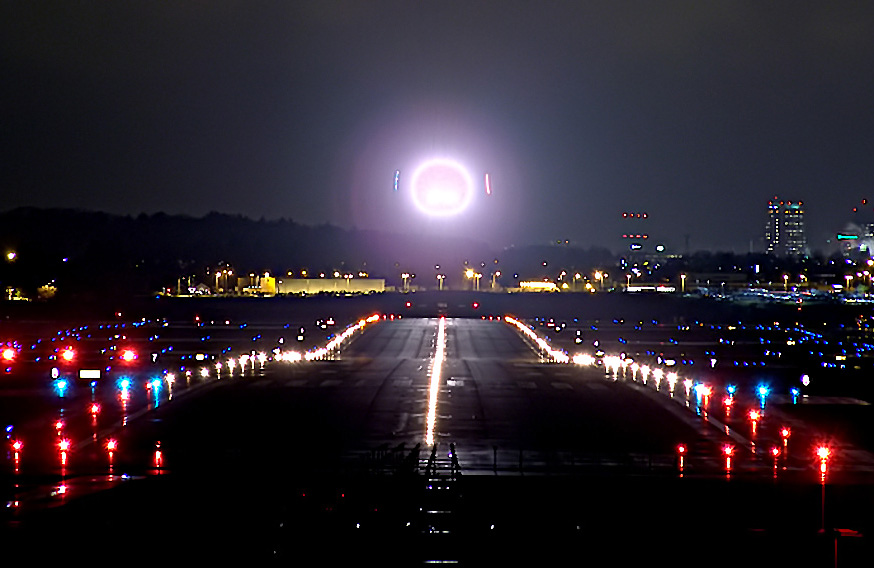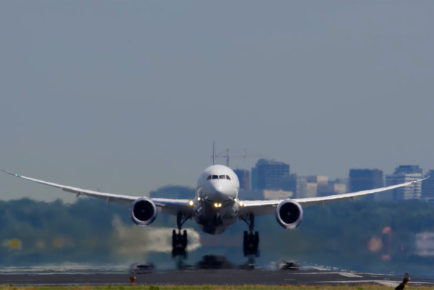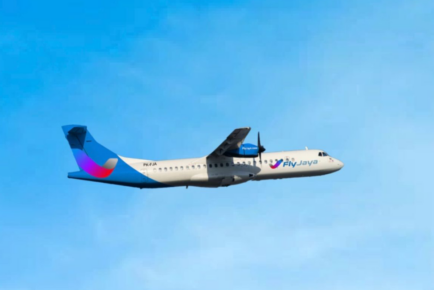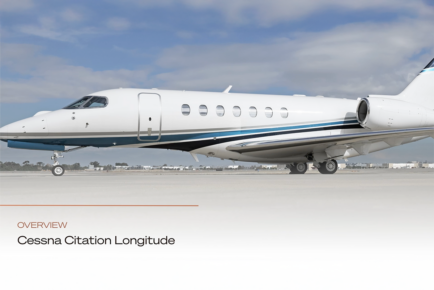
Enhanced Flight Vision System Operations (EFVS Ops) is one of those NextGen elements that functions just below the radar. Because it is considered elective and more the purview of the business jet community it is not in the limelight of the regular Washington airports and air traffic focus on ADS-B, PBN and Data Comm where endless streams of funding finds eager experts justifying business cases and promoting various benefits primarily to airlines. Meanwhile the rest of aviation sit and waits for rule making and mandates such as ADS B Out by 2020.
Speaking of rule making on June 11, 2013 the FAA announced a Notice of Proposed Rulemaking (NPRM) for a comment period ending in September that essentially will allow zero visibility operations without the need for natural vision, an ability to land at zero runway visual range without the need for Category III aircraft, crew and runway certification! This profound leap of enablement is all the more incredible when you realize the FAA intends perhaps for the first time, to provide guidance ahead of industries ability to equip. Yes, industry does not have the technology at this time to meet the certification challenge.
Note that this rulemaking is not an equipment mandate; it is an operational rule enabling the use of technology. It adds a new EFVS Part 91.176 to the existing flight rules and retains Part 91.175 for existing instrument approaches. This new rule removes the limitation for dispatch and removes the approach ban for air carriers.
Without changes to existing published approaches and their charts thousands will become as if Category II or III to the EFVS certified operator. The landing requires no natural vision. Because the natural visual segment of the approach is now replaced with enhanced electronic vision the aircraft transitions from the instrument portion to continue to land by the use of HUD(s) and enhanced vision.
The CAAC in China are creating EFVS ops rules that also enables a more expansive use of their various airports and runways, 8 by last December. For the first time a single country has focused attention on the goal of equipping with EFVS and HUD’s to better enable performance and have a competitive edge in the market place.
So what are EFVS ops and why are they part of FAA NextGen? Why are they being embraced and adopted by ICAO, EASA and CAAC? What is the equipage and why has it migrated more across business jets than airlines?
To answer these questions you have to first understand the history and the politics.
In 1929 ILS was first tested, followed in 1941 by six test sites introduced into US regions for the use of ILS equipped aircraft to operate down to 200FT decision height and 2,400FT runway visual range (RVR). Aircraft equipped with Category II avionics and recurrent trained crews may land into specific certified runways with suitable infrastructure. As with the dual onboard aircraft equipage those runway infrastructures are subject to scheduled maintenance. The category II benefit is a decision to land down to 100FT and RVR down to 1,200FT. Aircraft equipped with Category III avionics and trained crew can land into specific runways with Category III infrastructure. Category III operations are complex with RVR credits ranging between 700 and 0FT and decision altitude credits from 100 to 0FT depending on whether the aircraft, crew and runway is either Category IIIa, b or c. Traditional Category IIIc operations require Auto land and few business jets are equipped or maintain currency on Category II through IIIc, due to a number of factors not least of which is cost.
The same cost issues and age of infrastructure has convinced the FAA and others to look for alternatives. The FAA has consistently been nibbling away at existing runway operations to enable improvements without increasing cost to the public. This noble effort focused on commercial runways such as PHL 27R and SFO 28L allowing Special Authorization (SA) CAT II operations. SA category II to IIIc equipage typically involves one time changes to airport lighting and aircraft with head up displays (HUD’s). Meanwhile there are today over 1,200 business jets equipped with equipment capable of modern EFVS ops and few wide body aircraft outside of FedEx. Many airlines have been pinning their hopes on Ground Based Augmentation System (GBAS). Here enters the politics because ground based requires individual airport infrastructure to augment the existing GPS navigation system and less individual aircraft equipage to use it…desirable to commercial operators with their fleets of wide body aircraft.
More on EFVS Ops and what equipment is required to use them
An EFVS operation is an electronic means to meet the standard visual requirements to operate the aircraft in IMC during low visibility conditions, expanding the visual segment with vision technology and allowing the crew to see at the standard published minimums. Below are two tables representing approaches available today.
EFVS Ops in essence complement most of the above by meeting and essentially extending the visual decision part of the approach whereas traditional Category II and III systems would be required for similar RVR and lower decision altitudes.
As the situation exists today there are lots of variables to EFVS Ops based on the actual approach, the operational category of the aircraft and the region of the world you are conducting the flight. In Europe for example current decision minimums when EFVS equipped and certified, are 1/3 credit on the published RVR (with EFVS enabling the approach to begin). In the US, there are two distinct types of operations, specifically Part 91 which can begin the approach regardless of the weather, and Part 121 (135 and 91K) which may not begin the approach if the visibility is below published minimums. Under current Part 91 rule, the visual segment at minimums can be met with EFVS, but the crew must see the point of landing at 100FT to continue. The new rule EFVS 91.176 will allow appropriately equipped operators to approach and land with EFVS without the use of natural vision, depending upon the type of equipment and demonstrated performance.
EFVS Ops are not just meaningful on the approach. Part 91K, 135 and 121 operators may via Ops Specs and LOA’s enjoy reduced take off credit from 700 down to 500FT RVR. In the near future they may also gain surface movement advantages as Surface Movement Guidance Control (SMGC’s) or Low Vision Operations (LVO’s) are implemented.
One high level way to view the real benefit of EFVS Ops is extended low visibility operations into at least 15,000 runways worldwide where straight in approaches, appropriate lighting and operational approvals exist. For example business jets may decide on landing lower during any of 3,123 LPV approaches whether the approach DH is at or above 200FT DH (2,317 are above), effectively always being able to reduce the visual segment down to RVR at 100FT DH. VFR runways when operated with EFVS technology and WAAS LPV become qualified instrument runways.
How is this achieved?
An approach typically has two segments – an instrument and a natural vision segment. For FAA Part 91 operators if the human eye cannot see the required visual cues listed in Part 91.175 at the published decision altitude the approach may not continue. However if the human eye is replaced by an equivalent real time electronic means then bingo…as long as the electronic sensor can ‘see’ at the decision altitude you are okay to continue.
The FAA are very careful not to say what the electronic means needs to be, as long as it meets the operational requirements demonstrated during extensive flight testing as part of its equipage certification.
The FAA calls the aircraft equipage, pilot training and operational approval Enhanced Flight Vision System (EFVS). In other words as long as the following are met EFVS applies to an operation:
• Enhanced Vision System or EVS (currently only cooled infrared cameras)
• Head Up Display or HUD, as must be head up and eyes out
• Means of displaying a conformal EVS image on the HUD
• A properly trained crew with approved EFVS flight operations on specific aircraft
This is a one time effort for Part 91 operators and all equipage is ‘on condition’, a vast reduction of effort and cost from the former requirements of Category II and III operations.
To complicate matters EASA refers to EFVS as just EVS so not differentiating between the vision system and its HUD based operations.
HUD’s may operate independently of vision systems and on their own providing significant benefits:
• Constant view of flight path and energy state
• Precise aircraft control
• Stabilized approaches
• Improved manual touchdown precision
• Improved wind shear awareness
• Tail strike avoidance
• Recovery from unusual attitudes
Equipage clarification
An enhanced vision system currently only uses real time cameras because other means such as synthetic vision (SVS) are not equivalent to the human eye, not real-time and require the use of data bases that need regular updates for features such as obstacles.
Only head up displays may be used because it is essential on the approach and as the crew descends to land below minimums that situational awareness is at its optimum. Although there has been encouraging NASA based tests completed, it is not the current opinion of the FAA to allow EFVS Ops with SVS based sensors. SVS technology is aimed at the instrument segment, while EFVS technology is aimed at expanding the visual segment of the approach. However as with the Rockwell Collins Fusion HUD, SVS may be displayed on it and used for improved situational awareness.
Certainly with lower decision altitude, lower RVR and on the horizon zero/zero operations, the use of HUD’s in some form and enhanced vision beyond infrared will be essential. There may be a need for dual HUD’s (could be goggles), multi-spectral cameras that see better than today and additional sensors based on either active or passive millimeter wave technology currently in its infancy in terms of being ‘aircraft ready’.
“A path to success”, in the words of one pilot summed up the reason for equipping his business jet with head up technology. Even today with over 1,200 business jets equipped with low vision head up based systems, few pilots and flight departments fully understand their complexity and usefulness to operations. There needs to be a comfort level in using the expensive technology and that can only come from training.
New form s of simulation training using X-Plane and based on actual HUD-aircraft combination are about to enter the market. These may eventually replace the standard flight simulator and certainly will in the near term allow flight familiarization using the operators HUD type on the operator’s aircraft type, to fly into any X-Plane approach worldwide and there are many.
For large business jet owners there are several EFVS low vision equipped new aircraft to choose from including Gulfstream, Bombardier, Falcon and Embraer (Lineage) aircraft models. There is only one non OEM aftermarket option to date and that is the Jetcraft HUD Vision Access available on the CL604 as of June 2013.
The tide is turning as the world begins to embrace EFVS Ops appreciating the many benefits of its use.
SIGN UP FOR OUR MONTHLY JETSTREAM RECAP
Don't miss future Jetstream articles. Sign up for our Jetcraft News mailing list to receive a monthly eblast with links to our latest articles. Click to join the 1,800+ subscribers on our mailing list.





